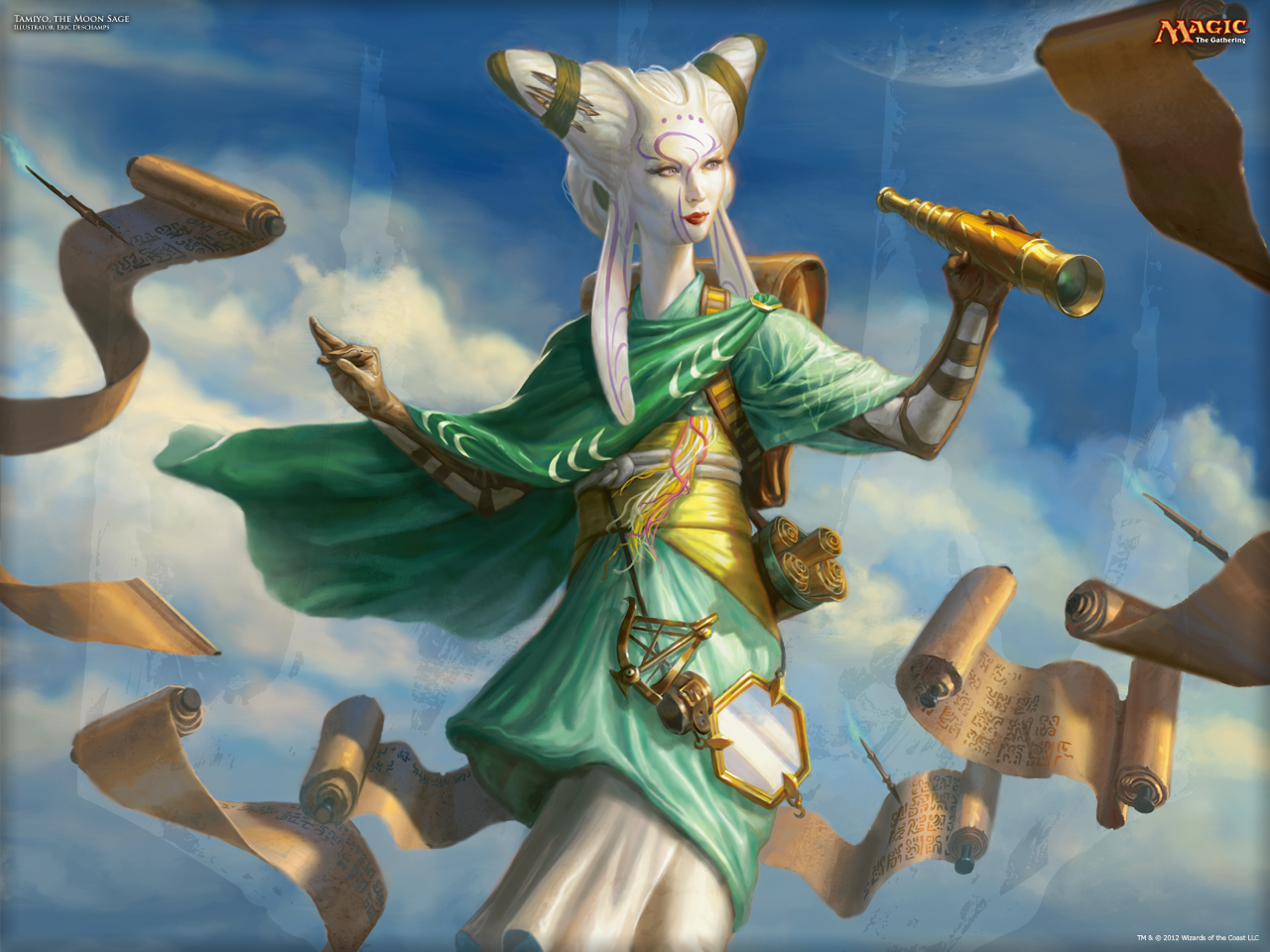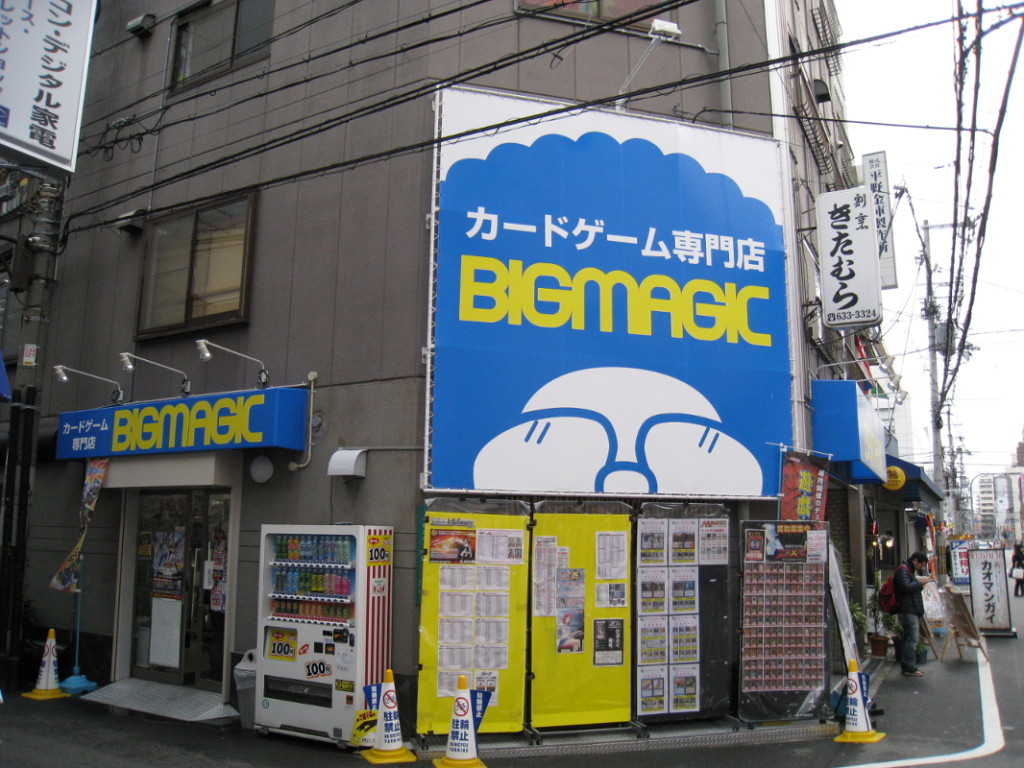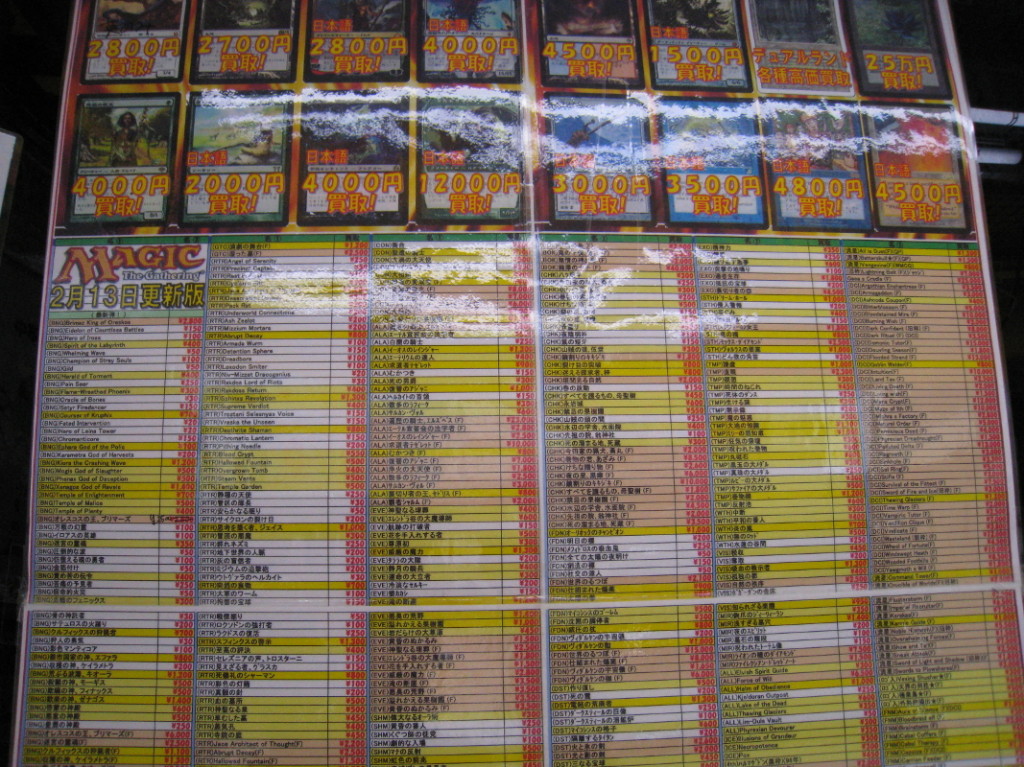By: JT Neal
First things first, let me introduce myself. I’ve played Magic on and off since Ice Age, albeit only very seriously since Innistrad. I’m an American (Atlantan, to be specific) and I’ve lived in western Japan for the last six years of my life. The first five of those years were mostly spent in rural Shiga, a lovely prefecture with historical castles, Japan’s largest lake… and dismayingly few shops that run Magic events*.
Then, in 2012, I moved to Osaka. Japan’s second-largest city, Osaka is the seat of western Japanese cuisine, comedy and commerce. It also boasts the Nipponbashi district, second only to Tokyo’s Akihabara as a geek mecca. With one move roughly two hours west, I’d gone from Magical famine to feast. Of course, this bounty presented a new threat to my wallet; enter my budding interest in Magic finance.
I’ll be the first to admit that I’m a new hand at this, and I’m very grateful to be able to share my discoveries in an unfamiliar market with you all here on MTG Price. The Japanese Magic scene is vibrant and worthy of attention, and I think we can all stand to gain by learning a little more about foreign markets. I’d like to start off by going over a few things that might surprise a visitor or new expatriate stepping in to the Japanese scene for the first time. (As a note, all US dollar figures I’ve given are based on the current exchange rate as I write this, of 101.72 yen to the dollar.)
– There’s a surprising amount of English product available. Stores stock English booster packs, and many carry English versions of products such as Commander decks as well. As far as single cards are concerned, most shops that specialize in Magic will have any given card (with the exception of very new or very old sets) available in both English and Japanese.
Between high availability and a relatively older player base, card language is rarely an issue among Japanese players. I know Japanese players who strongly prefer to use English cards, fellow expats who strongly prefer Japanese cards and everyone in between. It’s easy to forget all about the language barrier once you start playing.
For the most part, stores charge more or less the same amount for non-foils in either language, though very new English cards and older Japanese cards may cost a touch more due to supply issues. For foils, though, all bets are off – if you visit, you’ll probably find that last Japanese foil Stoneforge Mystic you’ve been hunting for, but don’t expect to get a deal on it.
– Many shops explicitly prohibit trading on the premeses. The store where I usually play doesn’t, but trade binders are still a relatively uncommon sight there. There’s plenty of trading going on at Grands Prix and the like, but at least in Osaka, few cards change hands under store roofs. There’s cold comfort in the fact that buylist prices are often pretty competitive. They have to be, because…
– In urban Japan, game stores are typically found close together. If you don’t like the prices or selection at one store, the next may be as far as one city block or as close as another floor in the same building. Some stores handle this competition well, by aiming to have the lowest prices, or stock the fullest discount case, or host the most events. Unfortunately, some deal with it rather poorly; one Osaka branch of a major store has banned all cell phone use, and I’ve seen the staff harass customers for carrying shopping lists.
– And then there’s the elephant in the room: Singles in Japan tend to cost a good bit more than you’re probably used to. Individual packs for in-print sets cost around 300 yen, which is on par with retail price in the United States. Single rares and mythics, however, generally retail for about 120 to 150% more on this side of the Pacific.
This is a fairly consistent rule of thumb, but of course there are outliers. If you’re in Osaka and you need a True-Name Nemesis in your hands today, you’ll spend anywhere from 7000 to a whopping 10000 yen ($69-$99) for the privilege, depending on the store. Tokyo-based tokyomtg.com can hook you up for 5,500($53).
On the other hand, while card price fluctuations in Japan tend to match worldwide patterns, they often take some time to catch up to spikes in the United States. For whatever reason (and I’m open to theories), I have noticed this tendency is particularly strong with eternal-playable lands. Zendikar fetchlands, Wasteland, Rishadan Port, even Serra’s Sanctum; all of these afforded at least a week’s time to act after spiking Stateside.
Single prices do look a little more familiar if you browse Yahoo Auctions ((http://auctions.yahoo.co.jp/
– Legacy is alive and well in Japan. My usual shop in Osaka runs at least two Legacy tournaments every week (it was four until recently, when they replaced two of them with Modern); another nearby spot runs Legacy events alongside their Standard FNM. There are several non-sanctioned Legacy events organized by members of the local community, too, like the popular Known Magician’s Clan ((http://mtgkmc.wix.com/kmc-
I hope this has been at least a little informative or interesting. What would you like to know about the Japanese Magic scene? Please don’t hesitate to contact me here, or on Twitter @JohnnyToNowhere, with any questions/comments/complaints/
* Respect due to Dragon Tale ((http://www.dragontale.jp)) in Kusatsu, Shiga
Track your collection's value over time, see which cards moved the most, track wishlists, tradelists and more. Sign up at MTGPrice.com - it's free!



I find it interesting that Legacy events occur so frequently compared to where I live (at least) or even through the United States as a whole. Why do you think this is?
Also, what’s that machine in the last picture? A vending machine of some kind? I can read that it says Standard on the top yellow line, but that’s about it. ^^;;
One reason Legacy thrives here is that the average player age is fairly high. There are a lot of card games here, even aside from the internationally-known Pokemon, Yu-Gi-Oh!, etc., and younger players tend to gravitate towards domestically-produced games with anime licenses. This, combined with the fact that Japanese people tend to give deeper focus to fewer hobbies, means a larger amount of the player base is able and willing to buy into Legacy. Magic players here are dedicated – I’ve met players who barely speak a word of English but who’ve played since well before the first Japanese-language cards were released.
The machine’s pretty much a repack lottery. Several stores have these as a way to get rid of bulk rares; they slip in a few in-demand cards among the junk and charge a couple hundred yen per go. They’re labeled “Legacy” or “Standard,” depending on whether they contain junk rares from Nemesis or junk rares from Dragon’s Maze. I can’t really recommend it, but hey, after that photo was taken, I got a Mirko Vosk and a Teysa in the same pack! Now that’s value.
yeah. I was wondering about the machine too. also etiquette. I read somewhere else (reddit maybe?) about how you purchase. the person said they hand a list to the person at the counter and they get the cards and it sounds very impersonal. is that the norm? any idea what Hokkaido is like?
Yeah, that’s how most stores do it – they’ll have a showcase where rare and/or popular cards are arranged by set, and then usually a set of binders with each set’s full card list and prices. You make a list of the cards you want and give it to the staff. Smaller shops and shops that don’t particularly specialize in Magic may have their entire inventory in showcases, in which case you call for a staffer to come over with a key and point out the cards you want. Of course there are also self-service bulk/common bins, but for the most part, the list is it.
It was a bit odd at first, but it’s not too impersonal once you’re used to it or become a regular. There’s often a lot of time to shoot the breeze with staff while someone digs out your cards.
Unfortunately I can’t tell you much firsthand about Hokkaido, but there are plenty of shops in Sapporo, including branches of major chains like Yellow Submarine and Amenity Dream. I imagine the shop setup is pretty much the same.
I went to Osaka last year. We had a lot of other things to do so didn’t have a lot of time to look at Magic Shops. We went to one mall that just had a stack of card shops. Most of them very small but a few had play areas.
We did manage to get to another area that had quite a few magic shops according to wizards locator but it was late at night. A few of the bigger ones were already closed some of the ones that were open had some great stuff (art work, duel lands, posters, all the FTV’s, random bags, common sets).
I thought they were great compared to what I am used to from Australian and Korean shops. Japanese shops had heaps of really cool accessories and put there singles in plastic displays that just surround the entire shop.
I wish I had of known more about buy listing at the time. In a future article I would love if you went through the protocol of selling cards there. What to ask for, how to present the cards etc. Do they give cash or credit?
This is my first article read fully on this blog and very interesting topic to me since I can ship cards to Japan easily and will have plan to sell later
I have few questions
1) Is JPN user shopping and order English cards on USA online shop? if do, which site?
since I’m sure USA online shop have best price
2) Which JPN online sites are most popular sites for yours?
Thank you for article! and looking forward more about JPN Magic!